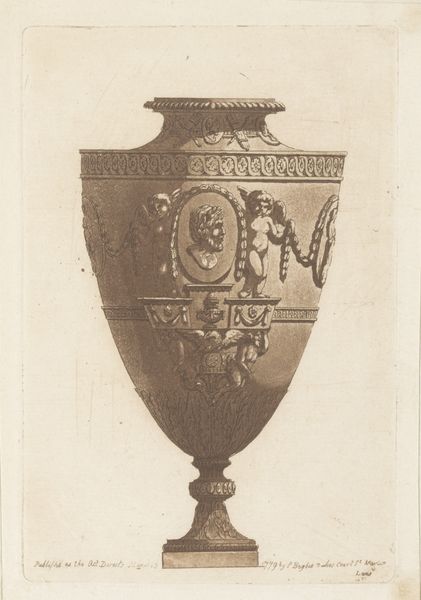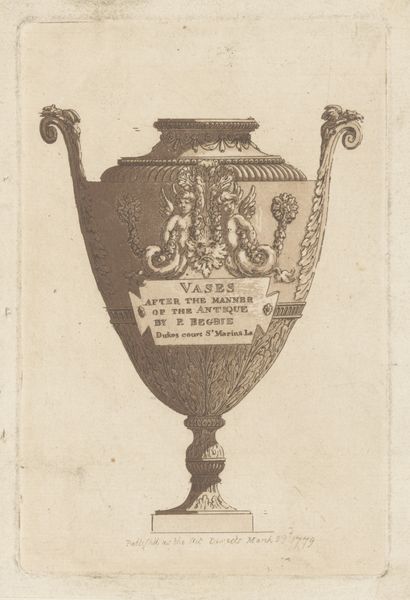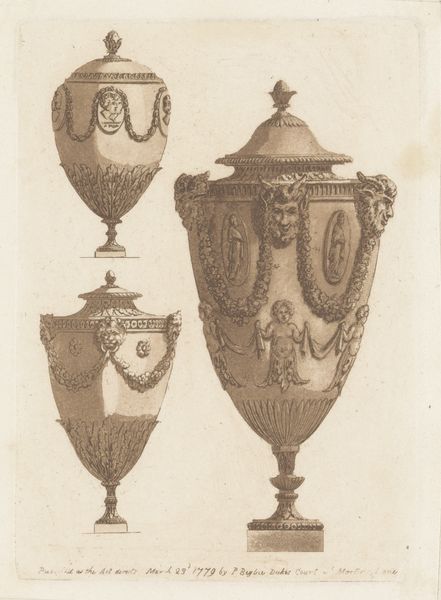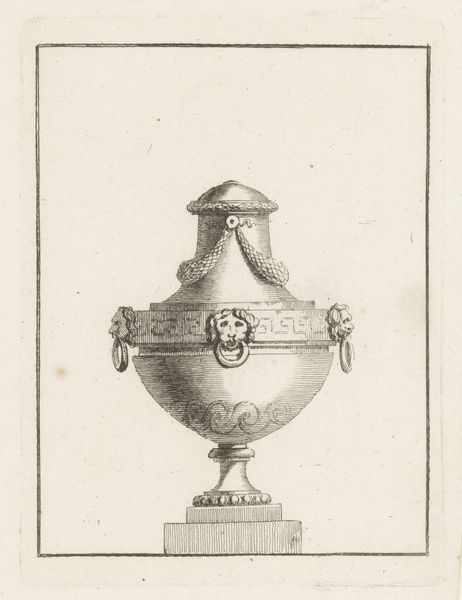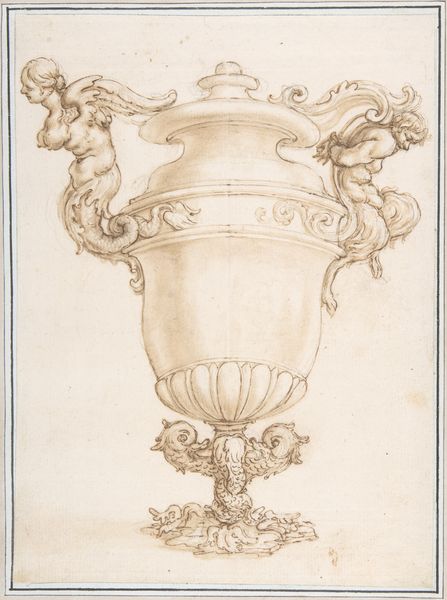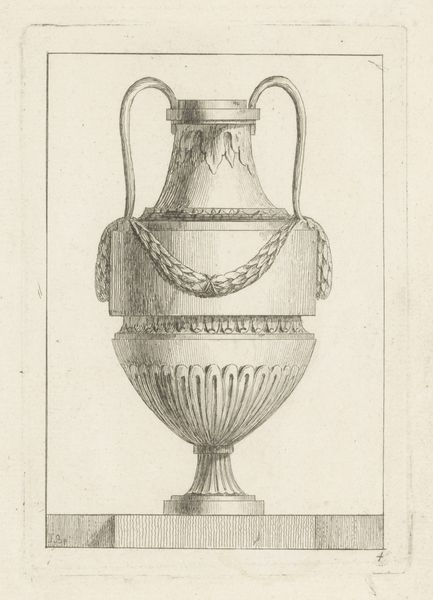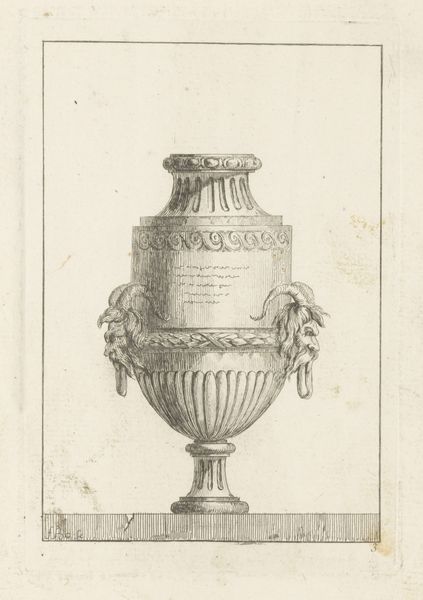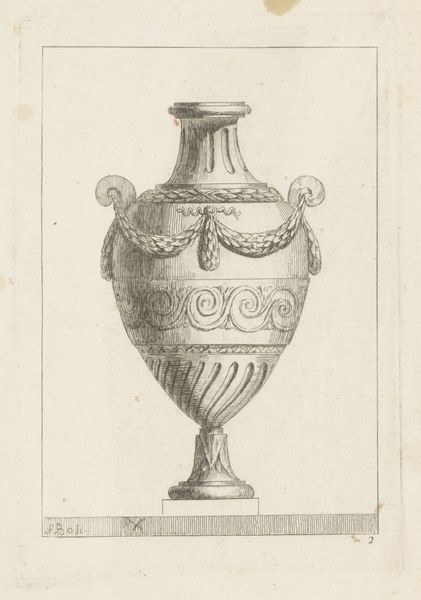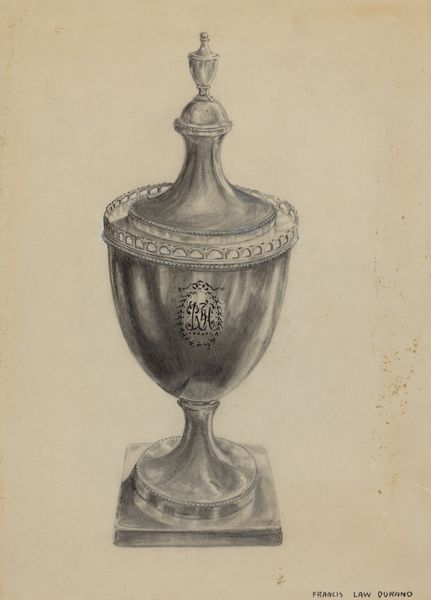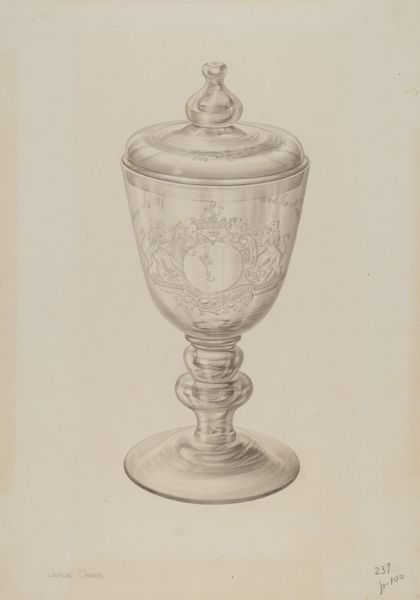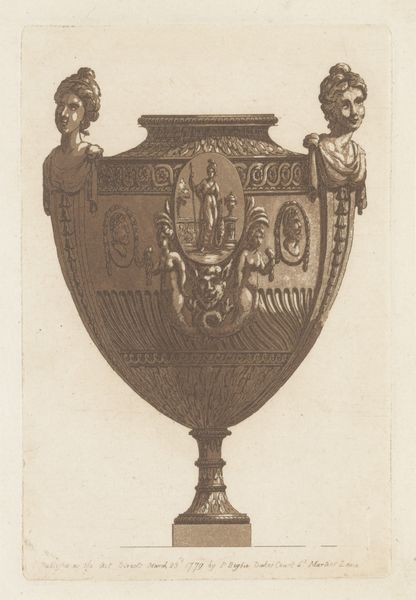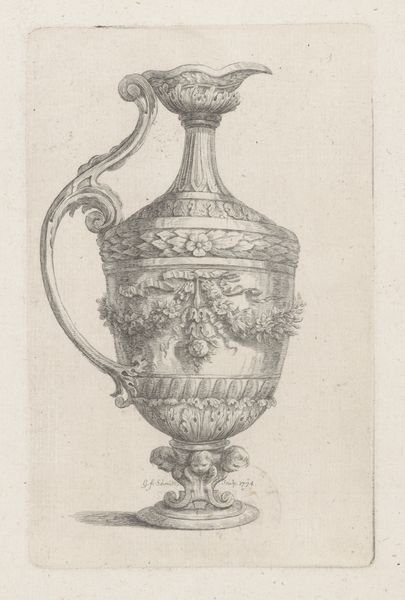
drawing, pen, engraving
#
drawing
#
neoclacissism
#
pen
#
academic-art
#
engraving
Dimensions: height 148 mm, width 109 mm
Copyright: Rijks Museum: Open Domain
Curator: Looking at "Antieke vaas met sfinx," possibly from 1779, what catches your eye? Editor: It’s monumental! The artist’s created such density of ornament with relatively sparse, if skillful, means. But is it an advert? Is this a purely functional representation of design? Curator: Likely intended as a model for artisans, a drawing or engraving disseminated for reproduction. It’s important to remember Neoclassicism wasn’t simply about aesthetics. The materials are central. Here, the very *idea* of classical material opulence is accessible for those with the right tools and skills to recreate it, on whatever scale is practical to them. Editor: I think there’s a paradox there. Aren’t such designs ultimately meant for display and, crucially, ownership by elites, or for institutions presenting these signs of good taste? Wouldn’t most workshops see it as unattainable? Curator: Not necessarily! Even an aspiring artisan could incorporate elements – the sphinx motif, say – into more humble designs. And such images were vital in promoting particular social values linked to refinement and erudition – ideals that more and more could aspire to through new means. Editor: That’s true, especially given that engraving and prints allowed designs to circulate more easily beyond courtly and wealthy circles. But it also underscores the way cultural institutions influence what is seen as fashionable or artistically important. Museums today play a huge part in reinforcing this lineage and legacy. Curator: The academic art style, here rendered through engraving, highlights this institutional link. These kinds of drawings codified classical design for educational purposes but also enabled more ambitious manufacturers of decorative ware to elevate the design. This isn’t just craft, but "Art" impacting industry and broader markets. Editor: Exactly! Even the "Antieke vaas met sfinx" is named with some consideration to elevate its position to something timeless and, indeed, worth the reproduction that comes after! Curator: I see the print’s material presence, and you emphasize it’s institutional afterlife! A great combination for analysis. Editor: Definitely food for thought when we consider design, production and who eventually shapes our taste.
Comments
No comments
Be the first to comment and join the conversation on the ultimate creative platform.

